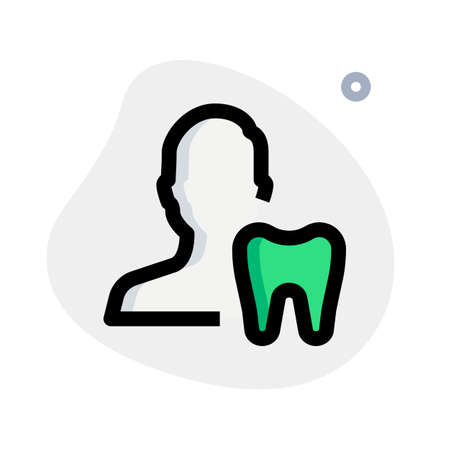1. Introduction: Shifting Dynamics in Tooth Replacement
The landscape of tooth replacement is undergoing significant transformation in the United States. In recent years, patient expectations have shifted dramatically. People are no longer satisfied with solutions that simply restore function—they want replacements that look natural, feel comfortable, and fit their budgets. As Americans become more informed about their dental options, affordability has emerged as a primary concern in choosing the right treatment.
Traditionally, tooth replacement options like dental implants or conventional bridges were considered the gold standard. However, these procedures can be expensive, time-consuming, and may not be suitable for everyone due to health reasons or insurance limitations. More patients are asking their dentists for solutions that balance quality, aesthetics, and cost-effectiveness.
Changing Patient Expectations
Modern patients expect more from their dental care. They want:
- Quick results: Fewer appointments and shorter recovery times
- Minimal invasiveness: Treatments that preserve healthy teeth and tissue
- Affordability: Options that won’t break the bank or require complex financing
- Aesthetics: Natural-looking solutions that blend seamlessly with existing teeth
Challenges in Tooth Replacement
Dentists face several challenges when helping patients replace missing teeth. Each solution comes with its own set of pros and cons, especially when it comes to cost and complexity. Here’s a quick comparison:
| Treatment Option | Main Advantages | Main Drawbacks | Average Cost (USA) |
|---|---|---|---|
| Dental Implants | Durable, natural appearance, preserves jawbone | Expensive, requires surgery, longer healing time | $3,000 – $5,000 per tooth |
| Traditional Bridge | Stable, fixed in place, relatively fast process | Requires altering adjacent teeth, higher cost than partial dentures | $2,000 – $5,000 per bridge |
| Partial Dentures | Removable, affordable upfront cost | Less stable, may affect speech/eating comfort | $600 – $2,500 per appliance |
| Resin-Bonded Bridges | No major surgery needed, preserves adjacent teeth, affordable | Best for certain cases (usually front teeth), may not last as long as implants | $1,000 – $2,500 per bridge |
The Growing Importance of Affordability
The rising costs of healthcare and dental insurance gaps have made affordability a key factor in treatment decisions. Patients are seeking practical alternatives that provide value without sacrificing quality or appearance. This trend is particularly noticeable among younger adults and those without comprehensive dental coverage.
This shift in priorities has paved the way for innovative solutions like resin-bonded bridges—also known as Maryland bridges—to gain traction as a go-to option for accessible tooth replacement in America.
2. What Are Resin-Bonded Bridges?
If you’ve been looking for a budget-friendly way to replace missing teeth, you might have heard about resin-bonded bridges. But what exactly are they? Let’s break it down in plain English.
How Do Resin-Bonded Bridges Work?
Resin-bonded bridges—sometimes called Maryland bridges—are a type of dental bridge that helps fill the gap left by a missing tooth. Unlike traditional bridges that require grinding down healthy teeth for crowns, these bridges use a metal or ceramic framework with “wings” that are bonded to the back of the neighboring teeth using a special dental resin (think of it like super-strong glue for teeth). The replacement tooth sits in the gap and stays put thanks to this bonding process.
How Are They Different From Implants and Dentures?
| Resin-Bonded Bridge | Dental Implant | Denture | |
|---|---|---|---|
| Procedure | No surgery, minimal prep | Surgical placement in jawbone | Removable appliance, no surgery |
| Affects Neighboring Teeth? | No major alteration | No impact | No impact |
| Stability | Fixed, but less strong than implant | Very stable and permanent | Can move/slip out of place |
| Cost | Affordable ($$) | Most expensive ($$$$) | Least expensive ($) |
| Treatment Time | Quick (few visits) | Longer (months for healing) | Quick (few visits) |
Main Benefits of Resin-Bonded Bridges
- No Surgery Needed: The process is minimally invasive—no need for drilling into the jawbone or major work on healthy teeth.
- Affordable: They’re usually much less expensive than implants and sometimes even less than traditional bridges.
- Fast Results: You can often get your smile restored in just a couple of dental visits.
- No Major Changes to Healthy Teeth: Neighboring teeth remain mostly untouched, which means more of your natural tooth is preserved.
- Natural Look: Modern materials make them blend right in with your other teeth.
- Easier Maintenance: Since they’re fixed in place, you care for them almost like your own teeth—no need to remove or soak them overnight like dentures.

3. Affordability and Accessibility: Meeting American Needs
When it comes to replacing missing teeth, cost is often one of the biggest concerns for Americans. Dental care in the U.S. can be expensive, and many patients worry about how to pay for tooth replacement options like implants or traditional bridges. This is where resin-bonded bridges (sometimes called Maryland bridges) are making a real difference.
Breaking Down the Costs
Resin-bonded bridges are generally much more affordable than dental implants or conventional fixed bridges. Because they require less invasive procedures, fewer appointments, and minimal preparation of adjacent teeth, the overall cost is significantly reduced. For families and individuals without extensive dental insurance, this makes resin-bonded bridges an attractive option.
Cost Comparison Table
| Tooth Replacement Option | Average Cost Per Tooth (USD) | Procedure Complexity | Typical Insurance Coverage |
|---|---|---|---|
| Dental Implant | $3,000 – $5,000 | High (surgery required) | Partial |
| Traditional Fixed Bridge | $2,500 – $4,000 | Moderate (tooth prep needed) | Partial |
| Resin-Bonded Bridge | $1,000 – $2,500 | Low (minimally invasive) | Often Higher |
Accessibility Matters for Everyday Americans
The simplicity and speed of placing a resin-bonded bridge mean fewer trips to the dentist—saving both time and money. These bridges are especially helpful for college students, young professionals, and retirees who need a reliable solution without breaking the bank. In areas where dental providers are limited or insurance coverage is tight, resin-bonded bridges offer hope for restoring smiles at a fraction of the cost.
The Bottom Line on Value
For many Americans weighing their tooth replacement options, affordability and accessibility are top priorities. Resin-bonded bridges are stepping up as a budget-friendly alternative that doesn’t compromise on quality or appearance. By lowering financial barriers, these bridges are helping more people regain confidence in their smiles without the heavy financial burden often associated with other solutions.
4. Trends Driving Adoption Across the U.S.
Analysis of Recent Data: Why More Americans Are Choosing Resin-Bonded Bridges
Resin-bonded bridges (RBBs) have been gaining traction as an affordable and minimally invasive tooth replacement option. Recent studies and industry reports highlight several key trends fueling their popularity across the United States.
Dentist and Patient Preferences
More dental professionals are recommending resin-bonded bridges because they require less drilling and preserve more natural tooth structure compared to traditional fixed bridges. Patients are also showing increased interest in RBBs thanks to their comfort, shorter chair time, and lower cost. The table below summarizes some preferences seen in recent surveys:
| Dentists’ Preferences | Patients’ Preferences | |
|---|---|---|
| Conservative Approach | 85% prefer minimal tooth prep | 72% value preserving natural teeth |
| Affordability | 68% recommend for budget-conscious patients | 74% seek cost-effective solutions |
| Treatment Time | 70% favor faster placement | 80% want fewer visits |
Insurance Dynamics: Making Tooth Replacement More Accessible
The insurance landscape is also shifting. Many private insurers now recognize resin-bonded bridges as a reimbursable solution, especially when compared to pricier implants or full-coverage bridges. This change is making RBBs more accessible to a wider demographic, including families, retirees, and young adults who might otherwise delay treatment due to cost.
The Urban-Rural Divide: Growing Appeal in All Communities
While big-city dental clinics were early adopters of resin-bonded bridges, recent data shows growing uptake in rural areas too. Smaller towns are seeing benefits from the affordability and quick turnaround of RBBs, especially where specialist care may be limited. Urban and rural patients alike appreciate the convenience and reduced recovery time, further driving nationwide adoption.
Adoption Rates by Location (2023 Industry Report)
| Community Type | % of Dentists Offering RBBs |
|---|---|
| Urban | 78% |
| Suburban | 73% |
| Rural | 62% |
The momentum behind resin-bonded bridges continues to build as both patients and providers prioritize less invasive, affordable dental solutions. As insurance coverage expands and awareness grows, it’s clear that this trend is reshaping how Americans approach tooth replacement—from big cities to small towns across the country.
5. Patient Perspectives: Experiences and Outcomes
Real-Life Stories from American Patients
Many Americans are turning to resin-bonded bridges as a practical solution for missing teeth. Their experiences offer valuable insights into how this treatment impacts daily life, satisfaction, and comfort. Here, we highlight some real stories and feedback from patients across the United States.
Case Study 1: John from Texas
John, a 34-year-old graphic designer from Dallas, lost his front tooth in a biking accident. He wanted an affordable and minimally invasive option. After researching his choices, he decided on a resin-bonded bridge.
- Satisfaction: “I was surprised by how natural my smile looks now. Most people can’t tell I had any dental work done.”
- Comfort: “The procedure was quick and almost painless. I didn’t need any major drilling or surgery.”
- Daily Impact: “I can eat most foods without worrying about my bridge moving or falling out.”
Case Study 2: Sarah from California
Sarah, a 48-year-old teacher in Los Angeles, had concerns about the cost of dental implants. Her dentist suggested a resin-bonded bridge for her missing lateral incisor.
- Satisfaction: “It was budget-friendly and still gave me the confidence to smile in front of my students.”
- Comfort: “It took just one appointment, and I didn’t need anesthesia. The bridge feels light in my mouth.”
- Daily Impact: “I don’t have to remove it at night like dentures, which makes life easier.”
Patient Feedback Overview
| Aspect | Positive Feedback | Concerns Noted |
|---|---|---|
| Satisfaction with Appearance | Natural look, blends well with other teeth | Slight color mismatch for some patients |
| Comfort During Use | No surgery required, minimal discomfort after placement | Sensitivity during first week reported by a few patients |
| Impact on Daily Life | No removal needed, easy maintenance, improved self-esteem | Avoiding very sticky foods recommended by dentists |
| Affordability & Access | Lower cost than implants or traditional bridges; often covered by insurance | Some insurance plans require pre-approval or have limits on coverage |
The Takeaway from Patients’ Voices
The rise of resin-bonded bridges is closely tied to positive patient experiences across America. People appreciate the simple procedure, affordability, and how easily these bridges fit into their routines. For many, choosing a resin-bonded bridge has restored not only their smile but also their confidence in daily social and professional interactions.
6. Challenges and Limitations
While resin-bonded bridges (also known as Maryland bridges) are gaining popularity as a budget-friendly option for tooth replacement, they are not without their challenges and limitations. It’s important to have a balanced view of what these bridges can—and can’t—do before deciding if they’re the right choice for your dental needs.
Durability Concerns
Resin-bonded bridges are less invasive than traditional bridges because they require minimal preparation of the surrounding teeth. However, this also means that they may not be as strong or long-lasting. The adhesive used to bond the bridge can sometimes weaken over time, especially if you regularly eat hard or sticky foods. As a result, there is a greater risk that the bridge could become loose or fall out compared to other types of dental restorations.
Durability Comparison Table
| Type of Bridge | Average Lifespan | Best For |
|---|---|---|
| Resin-Bonded Bridge | 5-10 years | Front teeth, minimal chewing force |
| Traditional Fixed Bridge | 10-15 years | Back teeth, stronger chewing force |
| Implant-Supported Bridge | 15+ years | Multiple missing teeth, high durability needed |
Eligibility Criteria
Not everyone is an ideal candidate for a resin-bonded bridge. These bridges work best when replacing one or two front teeth where the biting pressure isn’t too high. Patients need healthy adjacent teeth for the wings of the bridge to bond properly. If neighboring teeth have large fillings or are weakened by decay, this option may not be suitable.
Who May Not Be Eligible?
- People with significant tooth grinding (bruxism)
- Those missing multiple consecutive teeth in one area
- If adjacent teeth are heavily restored or decayed
- Poor oral hygiene habits leading to gum disease
When Resin-Bonded Bridges May Not Be the Best Fit
Certain situations call for more robust solutions than what resin-bonded bridges can provide. For example, if you need to replace molars or several neighboring teeth, or if you put a lot of pressure on your teeth while eating, a traditional bridge or implant-supported solution might be recommended by your dentist instead.
Main Takeaways on Limitations:
- Lifespan: Not as long-lasting as other options; may require repairs or replacement sooner.
- Bite Strength: Less suitable for areas of heavy chewing.
- Mouth Conditions: Healthy supporting teeth are a must.
- Aesthetics vs. Function: Great for visible areas but may lack strength for hidden ones.
7. The Future of Affordable Tooth Replacement
Emerging Innovations in Resin-Bonded Bridges
The dental industry is experiencing exciting developments as resin-bonded bridges (RBBs) become a go-to solution for affordable tooth replacement. New materials, such as advanced ceramics and reinforced resins, are making RBBs stronger and more natural-looking than ever before. Digital dentistry, including 3D printing and CAD/CAM technology, is also streamlining the design and placement of these bridges, allowing for greater precision and faster turnaround times.
Key Innovations in Resin-Bonded Bridges
| Innovation | Benefit to Patients |
|---|---|
| High-Strength Ceramics | Improved durability and aesthetics |
| Reinforced Resin Materials | Greater longevity and resistance to wear |
| Digital Impressions & 3D Printing | Faster appointments and better-fitting restorations |
| Chemical Bonding Agents | Stronger attachment with minimal tooth preparation |
Potential Regulatory Developments in the U.S.
As resin-bonded bridges gain popularity, regulatory bodies like the FDA are expected to focus on ensuring safety and quality standards for new materials and digital processes. There may be clearer guidelines for dental professionals regarding training and certification for using digital workflows and innovative bonding techniques. Insurance providers could also begin expanding coverage for RBBs, making this option even more accessible to Americans seeking cost-effective dental care.
What Could Change?
- FDA Approval: Faster evaluation of new dental materials and adhesives
- Insurance Policies: Potential increase in reimbursement for minimally invasive procedures like RBBs
- Licensing Requirements: Additional certification or continuing education on digital dentistry technologies for providers
Expert Predictions: How RBBs Will Shape U.S. Dental Care
Dental experts believe that resin-bonded bridges will continue to gain traction as patients look for affordable, non-invasive solutions. As public awareness grows and clinical results remain strong, general dentists are likely to offer RBBs more routinely—not just specialists. This shift could help bridge the gap in access to tooth replacement options, especially for young adults, seniors, and anyone without extensive dental insurance.
- Mainstream Adoption: More clinics offering RBBs due to patient demand and ease of procedure
- Diverse Patient Base: Suitable for teens needing temporary replacements as well as older adults seeking permanent solutions
- Sustainability Focus: Less invasive techniques mean preserving more natural tooth structure over time
The rise of resin-bonded bridges signals a future where affordable, high-quality tooth replacement is within reach for millions of Americans—driven by ongoing innovation, evolving regulations, and growing acceptance among both patients and dental professionals.


